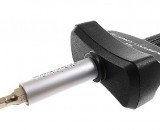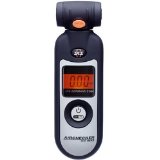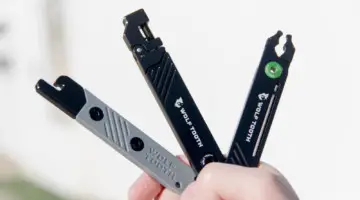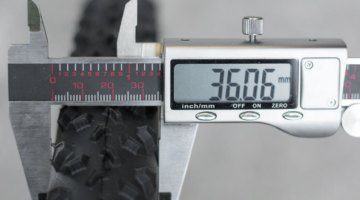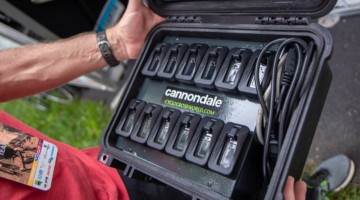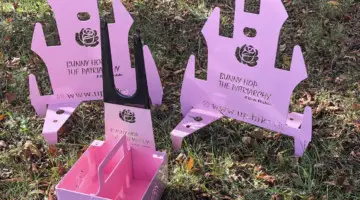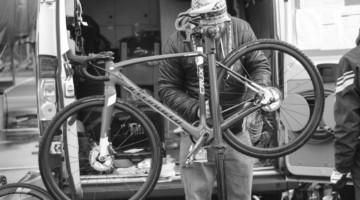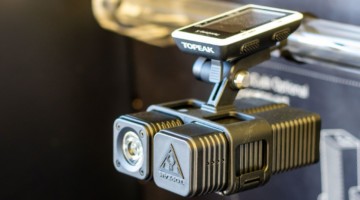
A muddy day means the pressure washers are going full steam in the pit, and your best friend might be a repair stand. © Cyclocross Magazine
Since it’s spring and cyclocross season is rapidly approaching, we at Cyclocross Magazine headquarters have all been thinking about what we need in order to have an even better season than last. For some of us, that’s a new bike, or better tires. For those of us who’ve recently discovered the sport, or are just getting into the idea of handling some bike fixes on our own, a tool kit makeover is in order. So we asked around, from mechanics to our own trusty CXM staff, to find out what sort of tools are out there, and what the favorites are, and here’s some of the responses we got last season:
“What’s the best tool a racer should own? Interesting question. I noticed you did not ask what the most necessary tool is nor what the most frequently used tool is, but the best tool. The best tool to own would be one that can be used to repair the greatest number of features on a bike. It would be a tool that, though used often, would not wear out quickly. That tool should likely be a tool upon which the other tools might rely on for their function.
For cyclocross, it would not be necessary for that tool to be altogether portable (as in carried on the bicycle) since a rider is never too far from where the tools might be. I think the best tool would kind of make your friends wish they had one too, because then their bikes would be better and they’d be faster, and they might have a chance at beating you. So, what tool has the diversity for all that?
I would say a repair stand. Bikes are easier to work on in a repair stand. Bikes are easier to clean in a repair stand. You can use all of your other tools more effectively with a repair stand. Work time will be decreased with a repair stand. With work time decreased, beer time increases, and that makes for happier cyclocross racers. Happy cyclocross racers make for a better sport. So you see, the future of our sport depends on everyone owning repair stands. Go now, ambitious racer, and buy a repair stand. Buy for yourself and buy for the generation to come.”
-Jason Gardner, Mechanic
“Right now, I think I’d say [something like] this: the Ritchey Torque Key. They have replaceable bits so they’re very versatile. It’s a great way to make sure things are where they should be. A torque wrench is even better, but the key is so simple and easy that I think you’ll ultimately end up using it more because of that. Stuff comes loose all the time on cyclocross bikes. But at the same time, they are becoming more like road bikes, so you can’t just monkey down on stuff. I had my bars slip (should have checked) and my seatpost slip (forgot to tighten) on my first ride out this weekend!
The Presta Ratchet is pretty handy, too (See Cyclocross Magazine’s recent review of the Prestacycle Prestaratchet here). No one tool will do everything, but this is great way to keep your bolts tight and still fit in your pocket.”
-Chris Mayhew, Mechanic
“Aside from the usual things like a good set of hex wrenches with a ball end on one side, I’ll mention a derailleur hanger alignment tool (Park DAG-2, $60 USD). For the 10- and 11-speed systems, keeping the rear derailleur hanger aligned will keep shifting at its best, and just dropping the bike on the drive side will slightly bend it, so you can imagine what the inevitable crash will do.
Oh, and an old toothbrush to get grime off the drive train without having to blast water at it (wait until it dries a bit, then brush off the surface grime, but depends on type of grime). Also, oil injector/syringe for derailleur and brake pivots, FD pulley, etc.”
-Clifford Lee, CXM Staffer
“My two cents: a set of bike wash brushes, a five gallon bucket with soap, and various bike lubricants.”
-John Proppe, CXM Pit Crew
“For all cycling pursuits, but especially for cyclocross, the most important tool is your wash bucket and brushes/rags. If you do your own maintenance, you know that dirty bikes wear out fast and clean bikes run longer. It is also much easier to work on a clean bike than one that still has crud on it from the last muddy course you raced on. Even for those who don’t maintain their own bikes, your favorite mechanic will be much more interested in (and able to) do a good job on getting your ride ready for the next training ride or race if the bike is clean. Get yourself a small plastic bucket, some Pedros bike wash soap, a soft bristle wheel brush from the autoparts store, and a few rags. Keep this setup where you keep your bikes and use it regularly!”
-Jeremy Chin, Mechanic
“It’s boring, but fixes so much – the trusty set of Allen wrenches!”
-Kenton Berg
“Only after I reviewed a handful of tire pressure gauges did I realize how inaccurate the average floor pump gauge is. Unless you use only one pump 100% of the time and never compare tire pressures to any other rider, owning a gauge and using it before races and training to really dial in your pressure can be the most effective and affordable way to maximize your performance … and avoid flats. Most racers still use too much pressure in their tires, and pumps are often less accurate on the low-end of the pressure scale. Whether you are riding tubeless, tubulars, or just clinchers and inner tubes, adding a dedicated gauge to your pre-ride and post-ride routine will take the guesswork out of getting your pressure dialed and will pay dividends. I’ve had good luck with gauges from SKS and Topeak, and they both have pressure release buttons, but the budget one from Slime works fine, too, and the battery has lasted a long time. Most shops should have at least one of the three above.”
-Andrew Yee, Cyclocross Magazine’s Chief Cowbell Ringer
“I’d have to say a good pump with an accurate gauge or a cordless inflator like the Craftsman that has a built in gauge would be the most important. Most racers don’t want to be wrenching on their bikes at the last minute, but being able to dial in pressures easily and then repeating those pressures for future races is critical.”
-Lou Kuhn, Mechanic
“Bondhus metric Allen set, any quality pressure gauge, and Pedro’s pit kit.”
-Kat Statman, Rumors & Rumblings writer extraordinaire
“A good mechanic.”
-Molly Hurford, Cyclocross Magazine Managing Editor, after a long search for a local New Jersey mechanic who wasn’t rude, didn’t patronize, and was willing to talk through what the bike needed.













